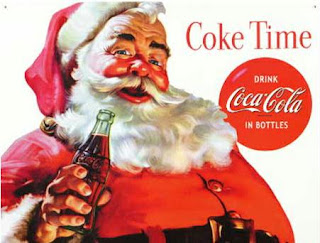
Africa’s biennial soccer fiesta is here again. The continent would be the focus of the sporting world this month as sixteen African countries battle each other superiority and for the coveted Orange African Cup of Nations in Angola. It will also serve as a platform for African nations that will be at the World Cup in June to fine-tune their teams.
Since its maiden edition in Sudan in 1957, only seven countries have managed to win the trophy with Egypt leading the pack with six triumphs—two in the last four years. It would, therefore, be interesting to see if the non winners and the perennial underachievers of this tournament would rise up to the occasion and alter the status quo or allow any of the previous winners to add up on their titles.
With Tunisia hosting and winning in 2004, Egypt also doing same in 2006, the Palancras Negras (the Angolan national team) backed by home support ranks among the favourites to win the trophy. An achievement of this feat would be the first official trophy for this nation who qualified for its first FIFA World Cup appearance in Germany in 2006. This ‘dream’, however, might be pushed into the future as they are drawn with power houses, Algeria and Mali. Qualifying for the World Cup at the expense of Nations Cup Champions, Egypt, the ‘Desert Warriors’ of Algeria have reignited the form that made them dominant in the 90’s. Though they missed another World Cup train, the Malians are far from pushovers looking at the talents they have in the likes of Barcelona’s Seydou Keita, Real Madrid’s Mahamadou Diarra, prolific striker Frederic Kanoute and Juventus’s midfielder Mohammed Sissoko.
One of the most confident teams that would be in combat in Angola is the ‘Super Eagles’ of Nigeria. Having made the trip to South Africa 2010 on the last day of the qualifiers, the self-belief and confidence of the Nigerian is at its highest. Ably supported by its vociferous fans, this Kanu Nwankwo led team would be aiming to brush aside all opposition to win the third Nations Cup for Nigeria. This goal would be spurred by their inability to win the tournament for the past sixteen years.
Despite their lack of success in this competition over the last decade, Cote D’Ivoire or Les Elephant as the team is known is now arguably the finest team on the African continent. Narrowly losing to hosts Egypt on penalties in the finals four years ago, the men from looks poised to go one step further this time. Also importantly, the Elephants would like to use the Nations Cup as an opportunity to display its firepower as it has been drawn in a group comprising of the likes of Brazil and Portugal in the World Cup. With Didier Drogba marshalling the attack, Yaya Toure creating in midfield and Manchester City’s Captain Kolo Toure shoring up the defence, the Ivory Coast has been tipped by many pundits to win their second African Nations Cup in Angola.
Another nation that also looks set to reaffirm its soccer prowess in Africa is the ‘Indomitable Lions’ of Cameroun. Finalists two years ago in Ghana, Cameroun would be one the teams to beat at the tournament. Making their first appearance at the Nations Cup in 1970, it has been one of the domineering forces of this tournament with its four triumphs. Also with veterans like Rigobert Song and Samuel Eto’o still playing, they boast of a vast knowledge of experience to transfer to young stars like Alexandre Song of Arsenal, Stephan Mbia and Bennoit Assou-Ekotto of Tottenham Hotspurs.
The Black Stars of Ghana are also expected to make a push for their fifth Nations Cup glory in Angola though having a relatively young team. Coach Milovan Rajevac’s team would be without skipper Stephen Appiah, Laryea Kinston and Sulley Muntari, but the experience of John Mensah, John Paintsil and Eric Addo can be blended with the youthful zeal of Andre Ayew, Dominic Adiyiah and the likes to achieve glory. The ‘Carthage Eagles’ of Tunisia would also try to wipe the tears of its supporters after losing out on the World Cup on the final day of qualifiers by winning the Nations Cup.
Coach Hassan Shehata would be chasing history in Angola to make it an enviable three consecutive triumphs. Though that looked farfetched on paper, no team plays the African game better than the ‘Pharaohs’. With chunk of the Egyptian squad playing in their national league, their cohesion and similar play style is unparalleled on the continent.
Usual of any tournament, the underdogs are there inevitably to cause upsets. This task falls on countries like Togo, Burkina Faso, Benin, Zambia, Gabon and Mozambique. Any of these countries would be out there to prove a point in order to make the finals in Luanda and perhaps win the trophy. It hasn’t happened in a very long—when an underdog wins the Nations Cup—but there is a first time for everything.
Looking at the various talented African footballers in all the major leagues in Europe, this month long football festival in Angola would be not short of spectacular and excitement as all the best African talents would be on display. Also it would reveal which country out of the six African countries that will represent the continent at the World Cup that will have the bragging rights of being the African Champions going into the first ‘African’ World Cup.
 It must however be said that many of these organisations are on a noble course. Several of them have packages designed in complementing government’s efforts in helping the less fortunate in society.
It must however be said that many of these organisations are on a noble course. Several of them have packages designed in complementing government’s efforts in helping the less fortunate in society.



